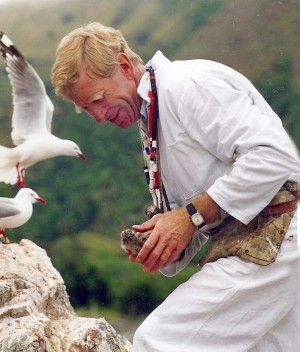 The focus of research has been on long-term studies of New Zealand’s fauna and flora.
The focus of research has been on long-term studies of New Zealand’s fauna and flora.
Currently, the emphasis is on a study of a known-aged population of red-billed gulls which commenced in 1964 and has continued for 51 years at the Kaikoura Peninsula.
The areas of interest include population dynamics with an emphasis on factors influencing variations in reproductive performance, behavioural ecology and quantitative genetics.
Specifically the topics include:
- The examination of the influence of morphology, age of first breeding on longevity, reproductive performance, frequency of breeding and fitness.
- Studies of quantitative genetics examining heritability of fitness components, genetic and environmental impacts on phenotypic expression, and inbreeding avoidance.
- Changes in breeding performance in relation to age, pair-bond duration and fluctuations in availability of food within and between seasons. This study is included in a global network of international seabird scientists (Marine Predator-prey Working Group) attempting to formulate an understanding of the forage requirements necessary to sustain breeding seabird populations.
- Transgenerational effects. Examining whether there are lifetime differences in reproductive performances of offspring hatched from old versus young parents.
- Factors affecting age and sex specific survival. The impact of the availability of food in the breeding season on breeders and non-breeders and climatic factors in the non-breeding period.
- The impact of a distorted sex-ratio in favour of females on the dynamics of the population.
- Factors affecting the avian and mammalian predation of adults and broods.
- Breeding performance of different aged males and females in the penultimate and last year of life and its implications for senescence.
- Extent of extra-pair paternity in the population and the role of Major Histocompatibility Complex (MHC) on mate choice.